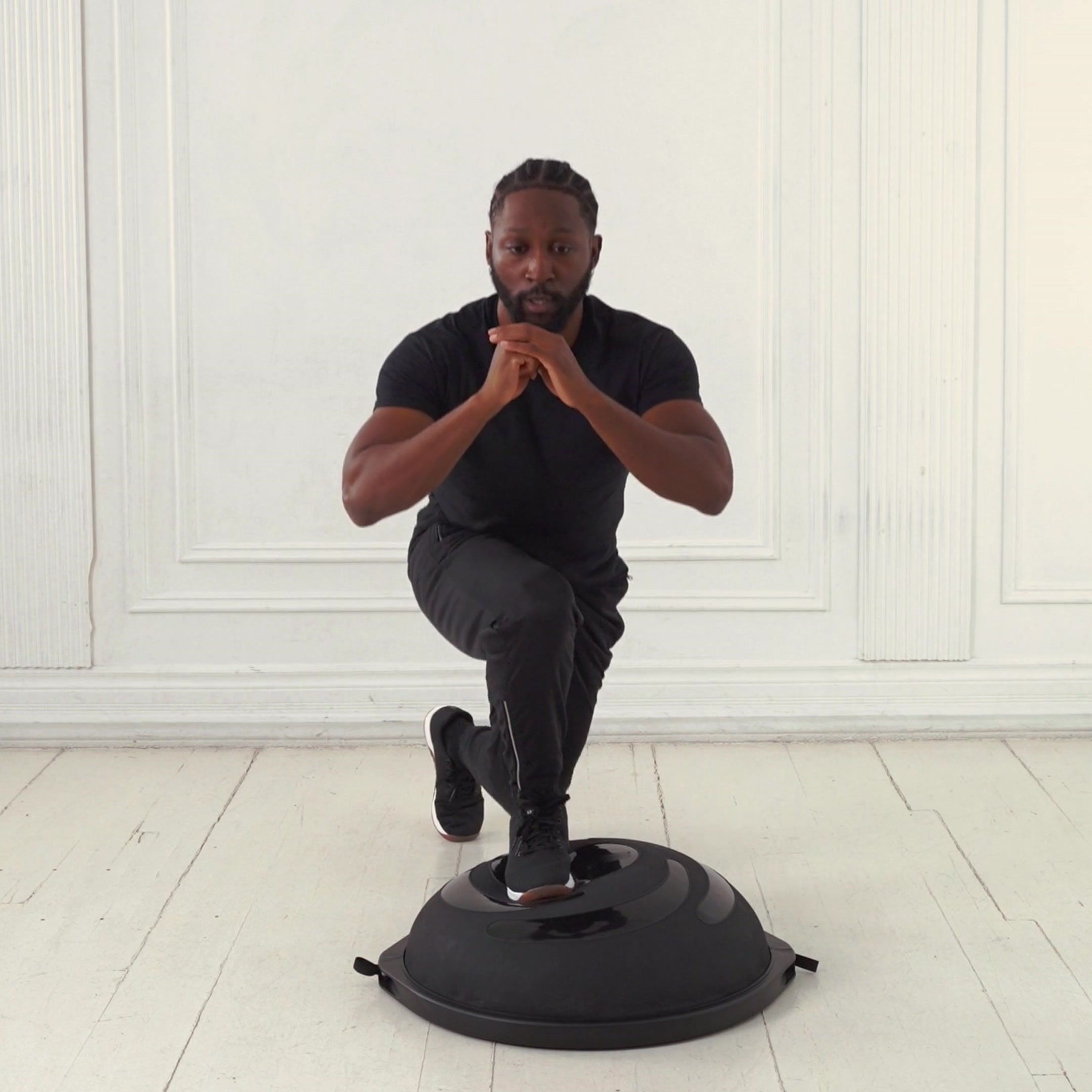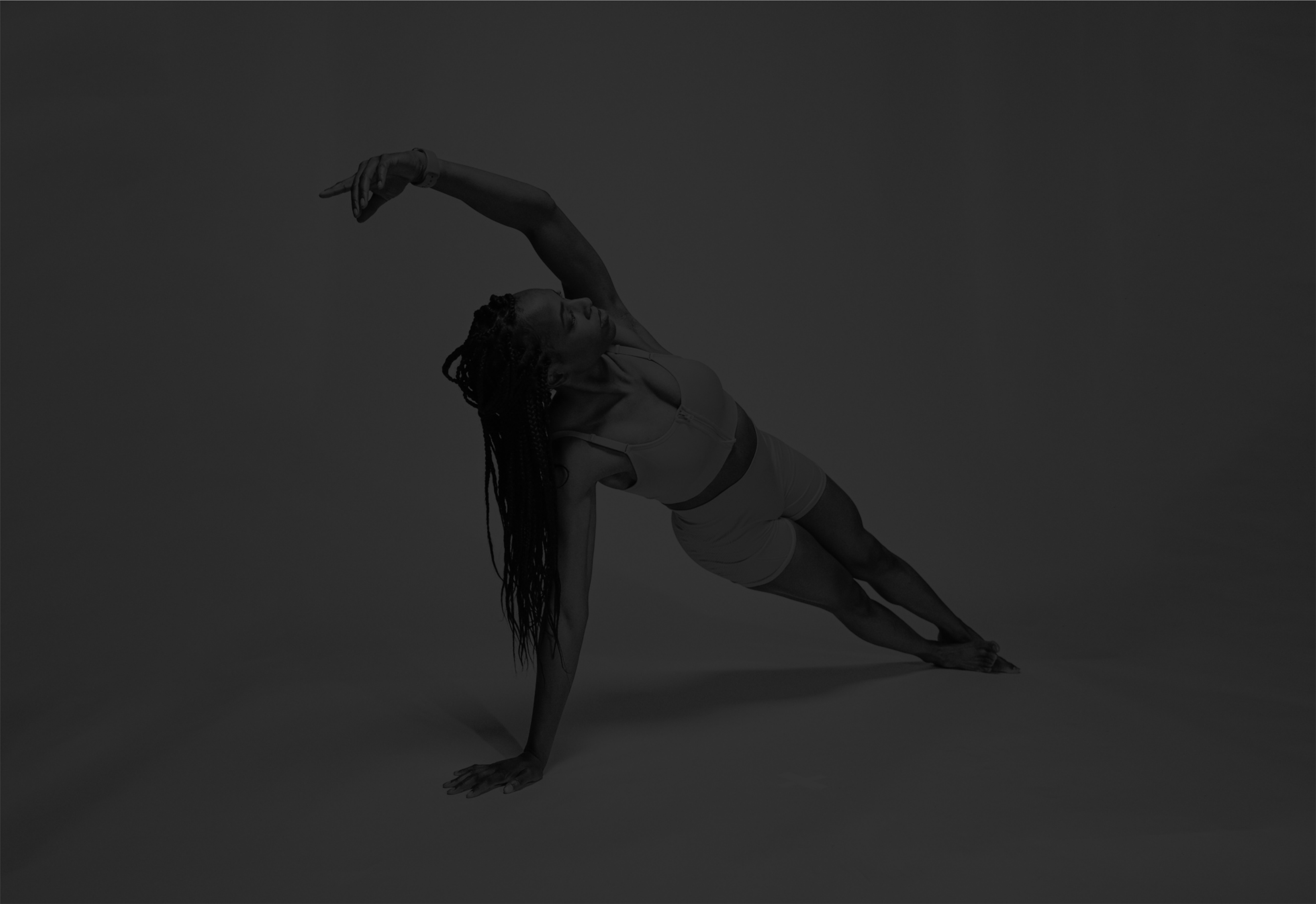Balance Trainer Side Lunge
Unilateral lower body exercise on a balance trainer targeting quads, glutes, and adductors to build single-leg strength, balance, and hip mobility in the frontal plane.
About Exercise
Equipment
Balance Trainer
Difficulty
4/5 • Intermediate
Primary Muscle Groups
Quads, Glutes
Secondary Muscles
Hamstrings, Abs, Obliques
Accessory Muscles
Calves
Popularity Score
5
Goals
Training Style
Setup Requirements
Requires Rack
No
Requires Bench
No
Requires Spotter
No
Space Needed
Small
Noise Level
Low
Muscle Breakdown
View Muscle MapQuads
9/10Rectus Femoris, Vastus Lateralis, Vastus Medialis
Glutes
8/10Glute Max, Glute Medius
Adductors
7/10Adductor Longus, Adductor Magnus
Hamstrings
5/10Abs
4/10Transverse Abdominis
Obliques
4/10Calves
2/10Programming
Typical Rep Range
8-15 reps
Rest Between Sets
60-90 seconds
How to Perform
Place balance trainer dome up on a stable surface. Stand centered on it with feet hip-width apart, core engaged, chest upright.
- Shift weight to one foot on the balance trainer and step the other leg out to the side.
- Bend the knee on the balance trainer side, pushing hips back while keeping the opposite leg straight.
- Lower until the bent thigh is near parallel to the ground, feeling a stretch in the inner thigh.
- Drive through the heel of the bent leg to return to start.
- Stabilize on the balance trainer before repeating or switching sides.
Coaching Tips
Form Cues
- Knee tracks over toes
- Hips back and down
- Core tight throughout
- Chest upright
- Push through heel
Breathing
Inhale as you lower into the lunge; exhale as you drive back to start while bracing your core.
Tempo
3-0-1
Range of Motion
Lower until bent thigh is parallel to ground or maximal safe stretch in groin; knee tracks over toes without passing them.
Safety
Safety Notes
- Perform slowly to maintain balance
- Ensure balance trainer is secure
- Avoid if acute knee or ankle injury
- Regress with support if balance is poor
- Stop if pain occurs
Spotting
Not typically needed; use wall or rack for support if beginner.
Common Mistakes
- Knee collapsing inward
- Rounding the back
- Rapid uncontrolled descent
- Leaning forward excessively
- Not engaging core
When to Avoid
- Acute knee injury
- Ankle instability
- Severe groin strain
- Hip mobility limitations
Flexibility Needed
- Adequate hip abduction range
- Ankle dorsiflexion for stability
Build Up First
- Master basic side lunge
- Balance competency on unstable surface
Also known as
BOSU Ball Lateral Lunge, BOSU Side Lunge, Balance Trainer Lateral Lunge
Found this helpful?
Share your thoughts or help us improve this guide.
Similar Exercises

Balance Trainer Curtsy Lunge
Balance Trainer
Quads, Glutes

Balance Trainer Hesitation Lunges
Balance Trainer
Quads

Balance Trainer Reverse Lunge
Balance Trainer
Glutes, Hamstrings

Balance Trainer Alternating Lunge
Balance Trainer
Quads

Balance Trainer Squat
Balance Trainer
Quads

Balance Trainer Burpee
Balance Trainer
Quads

Balance Trainer Step-Up
Balance Trainer
Quads

Balance Trainer Alternating Lunge Jumps
Balance Trainer
Quads
Balance Trainer Side Bend
Balance Trainer
Obliques
Balance Trainer High Knees
Balance Trainer
Hip Flexors, Quads


subscribe to our newsletter
Contact Us
hello@trainfitness.aiFind Us
130 Spadina Avenue, Toronto,
Ontario, M5V 0H4, Canada
©2025 All Rights Reserved
